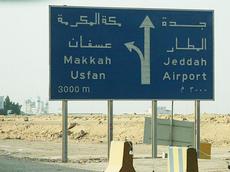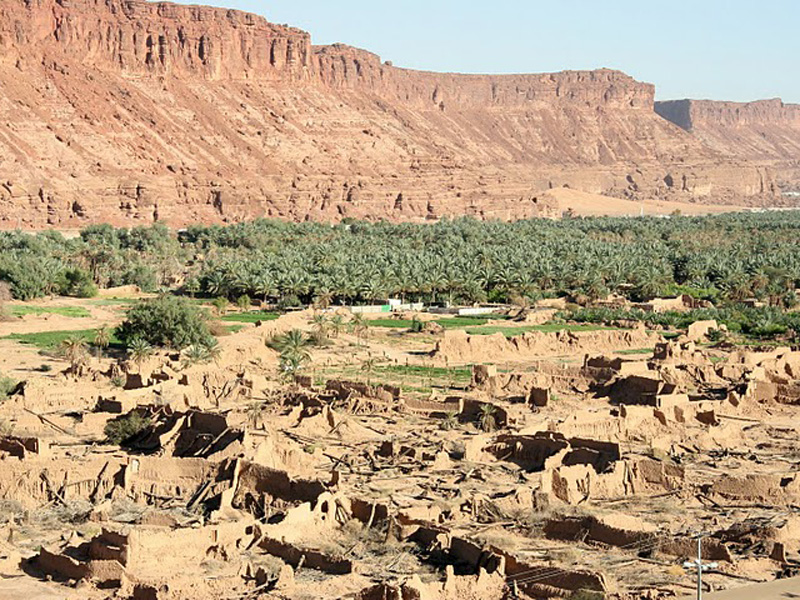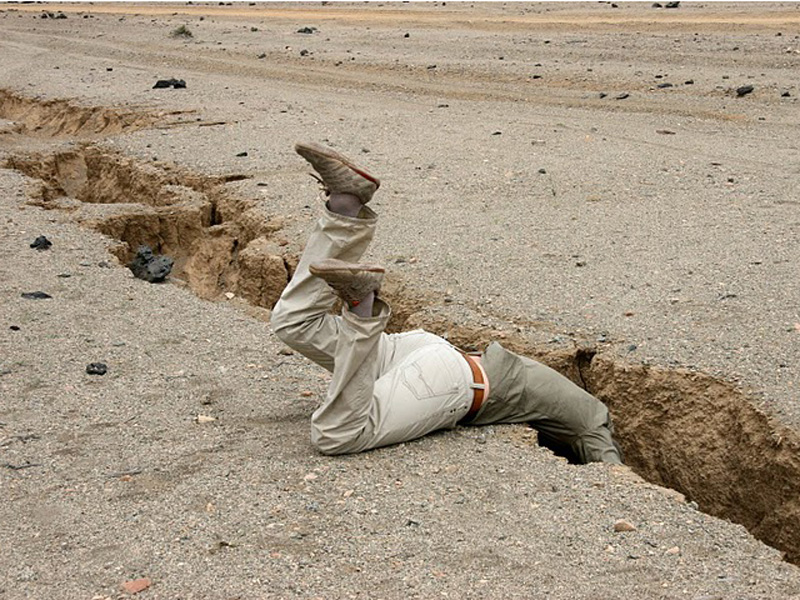Saudi Arabia – a rough diamond for tourists
Although there are pilgrims in Saudi-Arabia, there are no tourists. Cities of culture are abandoned and barely looked after. At the same time the country offers a diverse beauty. That is at least what geophysicist Sabrina Metzger noticed during her stay in Saudi-Arabia.

As we slowly made our way on our journey through the spectacular countryside to the lava fields in the Arabian outback, which would completely overshadow all the national parks in the south-west of the USA, we are followed by a large car, just like in a bad gangster film. Although the car was unobtrusive by maintaining a large distance behind us, our countless photo stops made confrontation unavoidable. It turned out that the English-speaking driver, who actually spoke very little English, belonged to the Saudi “Tourist police”, which is responsible for accompanying tourists like us at every turn. Whether this is for our protection or for the locals, I am not yet sure.
Plenty of pilgrims, not many tourists
Although Saudi Arabia accommodates more that 1.5 million foreign pilgrims each year, tourism in the Kingdom is virtually unheard of. The already delicate relationship with travellers intensified further in 2007 when three French tourists were killed by snipers not far from Madain Saleh, a UNESCO World Heritage Site and the most famous tourist attraction in the country. Since then the authorities have been unwilling to let foreign tourists travel on their own. Pilgrims are accompanied by strict surveillance on their journey to Mecca and Medina until they get back to the airport. Quite a lot of people from poorer countries, however, begin the pilgrimage with no intention of returning, with the hope of a new, better life in the holy land.
The Gulf state has no tourist infrastructure. It seems that nobody is interested in foreign tourists and that even the Saudis themselves are not curious about their homeland. There are hardly any hotels, and you can search for detailed maps in vain. Most of the road signs are only written in Arabic and the few travel agencies that do exist earn their money from expats, foreign nationals living in the country like me, who sometimes take weekend trips to the cultural capital of Taifa, the local cattle markets in neighbouring towns or to Madain Saleh itself.
No night-life or shopping boulevards
What is the reason for this incomprehensible disinterest in one's own country? Even during my short stay it was clear to me that Saudis have no public life. In Jeddah there are no popular night-life spots, shopping boulevards or tables in restaurants which are always full. The intolerable heat and the strict gender separation certainly also contribute to this stay-at-home mentality. Sport has no importance, the only mobility is provided by car, where possible directly from one garage to the next. Those who can afford it fly abroad for shopping or a party weekend, while others may just pop over to their relatives in the next town and stay with them.
At the same time this country, which is more than three-times the size of France, has so much to offer. There is, for example, the Rub'al Khali desert in the south of the country. It is one of the most inhospitable areas in the world, but the dunes there have a unique beauty. To the south-west the Asir plateau towers at 2,500 metres, only to fall back down to ground level over a short distance near the coast. An ancient mountain range stretches along the west coast up to Jordan, interspersed with volcanoes and young lava fields. And right next to it the Red Sea entices with its endless coral reefs.
On my exploration trips I experienced how severely Arabian culture is neglected and how the country is still stuck in the stone-age when it comes to tourism. The beauty of Madain Saleh is comparable with the Nabatean city of Petra in Jordan. While Petra is overrun by hundreds of thousands of tourists each year, a few thousand at the most make their way to Madain Saleh. Our travel guide gave a colleague an antique shard which he picked up off the ground, even though signs warn visitors of the fragile balance of this place and ask them to behave accordingly (do not throw anything away, do not take anything with you, etc.)! To the left and right of the roads the clay houses of the densely built residential area with its narrow streets are falling into ruin, since all the inhabitants were moved to modern houses in one go. Proposals are only slowly being put forward about how to protect the unique old town of Jeddah with its balcony-style windows cut out of wood against decay, moisture and car exhaust fumes. We used printed satellite images from Google Earth as walking maps. When walking in seemingly empty areas of the city I shed my Abaya, but I was always aware that I might bump into an ultra-conservative Muslim even in the darkest corners, who would then be outraged at seeing my uncovered legs.
A visa odyssey
At the moment there are only a handful of agencies that are permitted to issue tourist visas. When I read the strict restrictions I count myself lucky to have a "business" multi-entry visa, thanks to which I am able to move freely around the country: normal tourists are only allowed to travel on organised tours with at least 4 people. Women under the age of 30 have to be accompanied by a male relative. The state requests information about their place of stay. For people travelling by car, who cross the country by land, visas are issued for a corresponding number of days, which is hardly enough for a quick passage through. It is much easier for pilgrims to get a visa, although they are also bound to fixed routes.
At the moment the Kingdom is still rolling in money thanks to its oil fields, but soon other sources of money will have to be found. One of these could be tourism, and I am sure that people would visit in droves, particularly as the fascinating country is extremely safe with regards to crime. In order for Saudi-Arabia to open itself up for tourism, a big relaxation of conditions would be needed, which will definitely not happen overnight. Masses of tourists in shorts are still unthinkable at the moment.
About the author
Sabrina Metzger studied interdisciplinary
sciences at ETH Zurich. After working on a project at the Swiss Seismological
Service for a year, which involved analyzing the micro-earthquake near the
Gotthard Basis Tunnel still under construction, she then moved to Spectraseis
Technologie AG, a spin-off of Zurich University. In the spring of 2008, she
returned to ETH Zurich to embark on a PhD at the Institute for Geophysics.
Metzger is currently in Saudi Arabia, however, working as a guest researcher at
the recently founded King Abdullah University of Science and Technology
(KAUST). This is because her supervisor, the Icelandic geophysicist Sigurjón
Jónsson, moved to KAUST from ETH Zurich to take up a position as an associate
professor.









READER COMMENTS